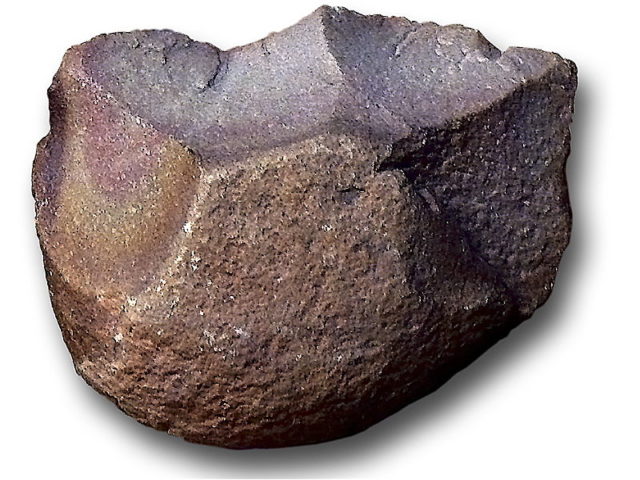A haul of stone tools found in the Jordanian desert has given us a glimpse into the eating habits of our Stone Age ancestors. Evidence of ancient animal protein has survived 250,000 years on the edges of the stone scrapers and flint blades. They propose that the early humans who made them had the ability to butcher long animals skillfully and precisely long before our own species, the Homo sapiens. The discoveries suggest that these early Stone Age people were consuming a range of meats, and were particularly partial to duck, rhino, and horse. Investigators claim that the residue found on the tools is the oldest historical evidence of animal protein. They think the unknown human ancestors were most likely Homo heidelbergensis or Homo erectus.

A team from the University of Victoria, working with investigators within the US and Jordan, found 10,000 stone tools throughout the duration of a three-year excavation in the deserts northwest of the city of Azraq. The region today is arid and dry, but thousands of years ago it is believed to have been a vast expanse of wetland, which would have served as ideal hunting grounds. According to scientists, the finding shows hints of the sophisticated behavioral changes of these early hominins. By utilizing antiserum unique to alternate animal proteins, they were able to identify the residues left on the tools, and could work out which animals had been butchered by them.
The hominins within this region were able to take advantage of a wide range of prey that was available, even with being in an extremely challenging environment. It is not clear which kinds of human family tree occupied the location, and in fact, there might have been extensive interbreeding.
While many of us might shudder at the thought today, horse was a normal meal for our Stone Age ancestors in the region. The investigators explained that whoever they might be, they lived within a small nomadic family society, mating with individuals from other nomadic tribes. It is probable that this site was not a habitation site, but it was used for hunting, foraging, and scavenging groups who went to find the animals and butcher them. For the reason that this site was located at a watering hole, it was likely not a safe place to live especially with offspring.

The Homo erectus was thought to have evolved about 1.9 million years ago in Africa, the first early human species to become a true global traveler. They are thought to have moved from Africa into Eurasia, spreading as far as Indonesia, China, Lanka, Sri Lanka, and Georgia. They ranged in size from just around five feet to over six feet tall. They had a smaller brain and a heavier brow than humans today. Homo erectus were a key evolutionary step towards modern humans, and might have given rise to a number of other extinct human species comprising of the Home antecessor and Home heidelbergensis. They are believed to have vanished about 70,000 years ago. Homo erectus lived in a hunter society, and there is evidence that suggests they used fire and created basic stone tools.
This recent discovery tells us about their lives, and the strategies they used for survival. It opens up our desire to ask questions about how Middle Pleistocene hominins lived within this region, and it may be the key understanding the nature of the population and interbreeding across Eurasia with modern humans, and archaic populations such as the Neanderthals.
